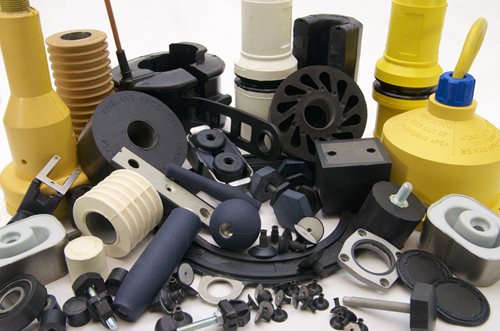Rubber to Metal Bonded Products Manufacturer

Rubber-to-Metal Bonded Products Manufacture
Rubber-to-metal bonded products are integral components in various industrial applications, ranging from automotive to aerospace and consumer goods. These products combine the flexibility and resilience of rubber with the strength and durability of metal, creating a composite material that offers both performance and longevity. The manufacturing of these products involves a sophisticated process that ensures the rubber adheres effectively to the metal substrate, resulting in a robust and reliable end product.
1. Understanding Rubber-to-Metal Bonding
Rubber-to-metal bonding involves the adhesion of rubber compounds to metal surfaces. This bonding process is crucial for applications where the combined properties of rubber and metal are needed. The rubber provides cushioning, vibration isolation, and impact resistance, while the metal offers structural support and strength. The bond between these two materials must be strong and durable to withstand the stresses and environmental conditions to which the product will be subjected.
2. Materials Used
The choice of materials is fundamental to the success of rubber-to-metal bonding. Rubber compounds are typically chosen for their specific properties, such as natural rubber, neoprene, nitrile, or silicone, depending on the application requirements. The metal substrates used can vary widely, including steel, aluminum, and various alloys. The selection of these materials depends on factors such as the operating environment, mechanical stresses, and thermal conditions.
3. Bonding Process
The bonding process generally involves several key steps:
-
Surface Preparation: Both the rubber and metal surfaces must be properly prepared to ensure a strong bond. For metal surfaces, this often involves cleaning, degreasing, and sometimes roughening to increase the surface area for adhesion. Rubber surfaces may also require treatment to enhance bonding properties.
-
Adhesive Application: A special adhesive or bonding agent is applied to the metal surface. This adhesive is designed to create a strong chemical bond between the rubber and metal. Common adhesives used in this process include rubber-to-metal bonding adhesives, which are formulated to withstand the stresses of the application.
-
Molding and Curing: The rubber is then placed over the adhesive-coated metal and subjected to heat and pressure in a mold. This process, known as molding or vulcanization, cures the rubber, causing it to chemically bond with the adhesive and the metal. The curing process ensures that the rubber conforms to the metal surface and forms a solid, durable bond.
-
Quality Control: After molding, the bonded products are inspected for defects and tested for strength and durability. Quality control ensures that the products meet the required specifications and performance standards.
4. Applications
Rubber-to-metal bonded products are used in a wide range of applications:
- Automotive Industry: Engine mounts, suspension bushings, and vibration isolators.
- Aerospace: Aircraft landing gear components, vibration isolators, and seals.
- Industrial Equipment: Shock absorbers, machinery mounts, and conveyor system components.
- Consumer Goods: Household appliances and electronics.
5. Advantages
The primary advantages of rubber-to-metal bonded products include enhanced durability, improved performance, and the ability to withstand harsh operating conditions. The combination of rubber and metal offers superior vibration damping, noise reduction, and resistance to environmental factors such as heat, chemicals, and moisture.
6. Challenges
Despite the advantages, there are challenges in the manufacture of these products. Achieving consistent and reliable bonding can be complex, and variations in materials and processes can affect the final product's performance. Continuous advancements in adhesive technologies and manufacturing techniques are essential to overcome these challenges and meet evolving industry standards.
Conclusion
The manufacture of rubber-to-metal bonded products is a sophisticated process that leverages the strengths of both materials to create components with enhanced performance characteristics. By focusing on precise materials selection, effective bonding processes, and rigorous quality control, manufacturers can produce high-quality products that meet the demands of various industrial and consumer applications. The ongoing development in adhesive technologies and manufacturing methods continues to drive innovation and improve the effectiveness of these critical components.
